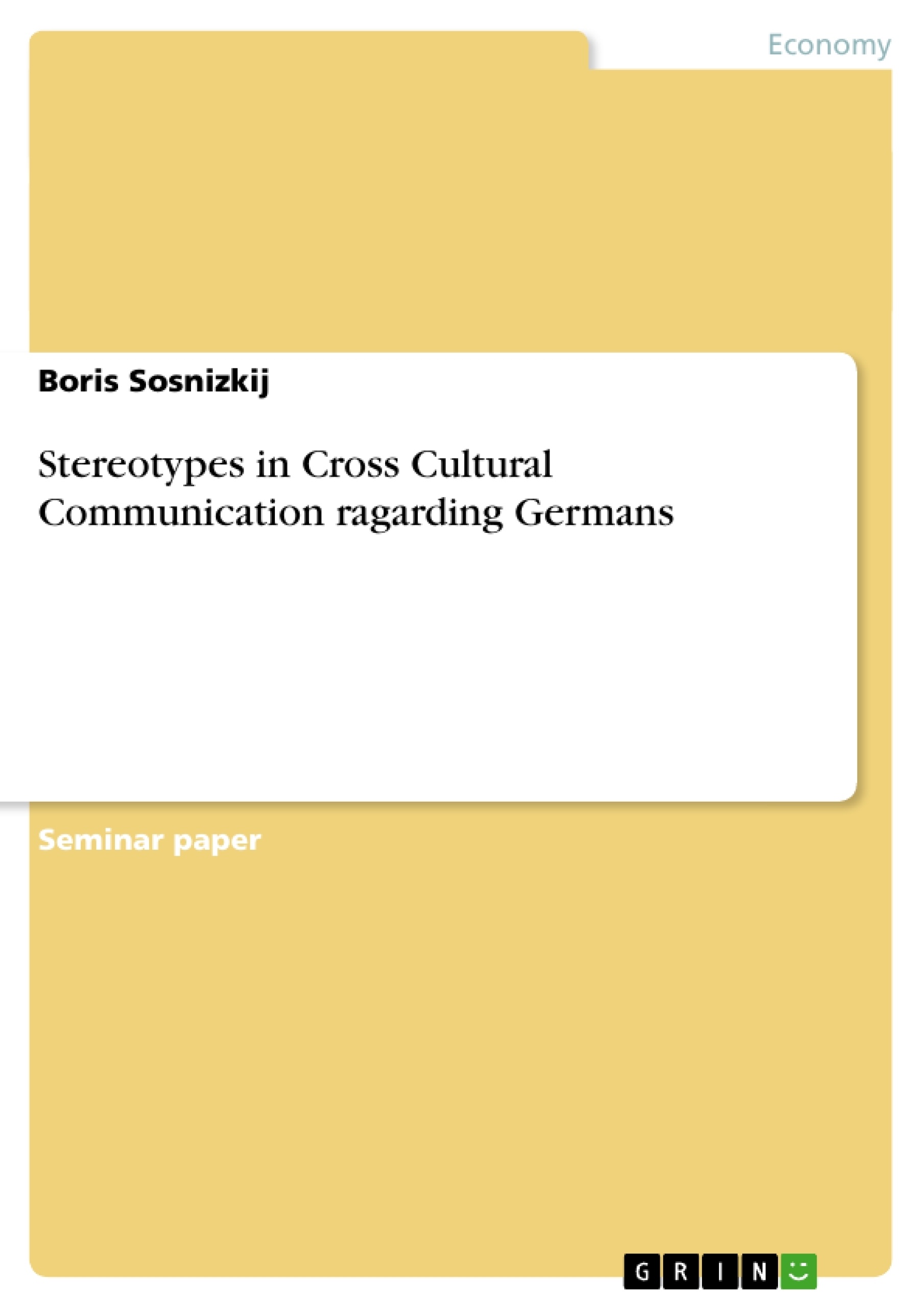Where do stereotypes come from? Can stereotypes be changed? Do stereotypes represent a culture?
Streotypes – structured sets of beliefs about the characteristics of members of social categories – influence how people attend to, encode, represent and retrieve information about others and how they judge and respond to them. We develop stereotypes when we are unable or unwilling to obtain all of the information we would need to make fair judgement about people or situations. In the absence of the “total picture“, stereotypes in many cases allow us to “fill in the blanks“.
Society often innocently creates and persuates stereotypes.
Can they lead to unfair discrimination or even persuation when they are unfavorable?
This assignment will give a comprehensive overview of the term – stereotype – in general and highlight the approach to the common german stereotype integrating wether this stereotype provides an accurate picture of the german people or remains a generalization which is not representative.
Table of Contents
- Introduction
- Stereotype - A general approach
- Definition of the term
- Origin of the term
- A critical explanation/dispute
- German stereotypes
- The importance beeing serious and unfriendly
- German order
- German fear and bureaucracy
- The beer drinking German
- Conclusion
Objectives and Key Themes
This assignment aims to provide a comprehensive understanding of the term "stereotype" in general and examines the common stereotype of Germans. It aims to explore if this stereotype accurately reflects the German people or remains a generalized representation.
- Definition and origin of the term "stereotype"
- Critical analysis of stereotypes and their impact on social perception
- Examination of common stereotypes associated with German culture
- Evaluation of the accuracy and potential biases of these stereotypes
- Understanding the role of stereotypes in shaping intercultural understanding
Chapter Summaries
- Introduction: This chapter introduces the topic of stereotypes in the context of increasing global interaction and cultural exchange. It highlights the prevalence of stereotypes in shaping our perceptions of other cultures and the importance of understanding their origins and impact.
- Stereotype - A general approach: This chapter provides a comprehensive overview of the term "stereotype," exploring its historical roots and various interpretations. It examines the definition of the term, traces its origin in printing technology, and analyzes its adoption in social psychology. This chapter also critically explores the role of stereotypes in shaping our perceptions of social groups, highlighting their potential for both positive and negative influences.
- German stereotypes: This chapter delves into common stereotypes associated with German culture. It examines specific attributes such as seriousness, orderliness, bureaucracy, and beer consumption, exploring their origins, prevalence, and potential inaccuracies.
Keywords
The main keywords and focus topics of this text include stereotype, social cognition, cultural perception, German culture, intercultural understanding, generalization, bias, prejudice, and accuracy. The text investigates the influence of stereotypes on social interactions and seeks to critically analyze their validity in relation to specific cultural groups, particularly the German population.
- Arbeit zitieren
- Boris Sosnizkij (Autor:in), 2003, Stereotypes in Cross Cultural Communication ragarding Germans, München, GRIN Verlag, https://www.grin.com/document/26199




